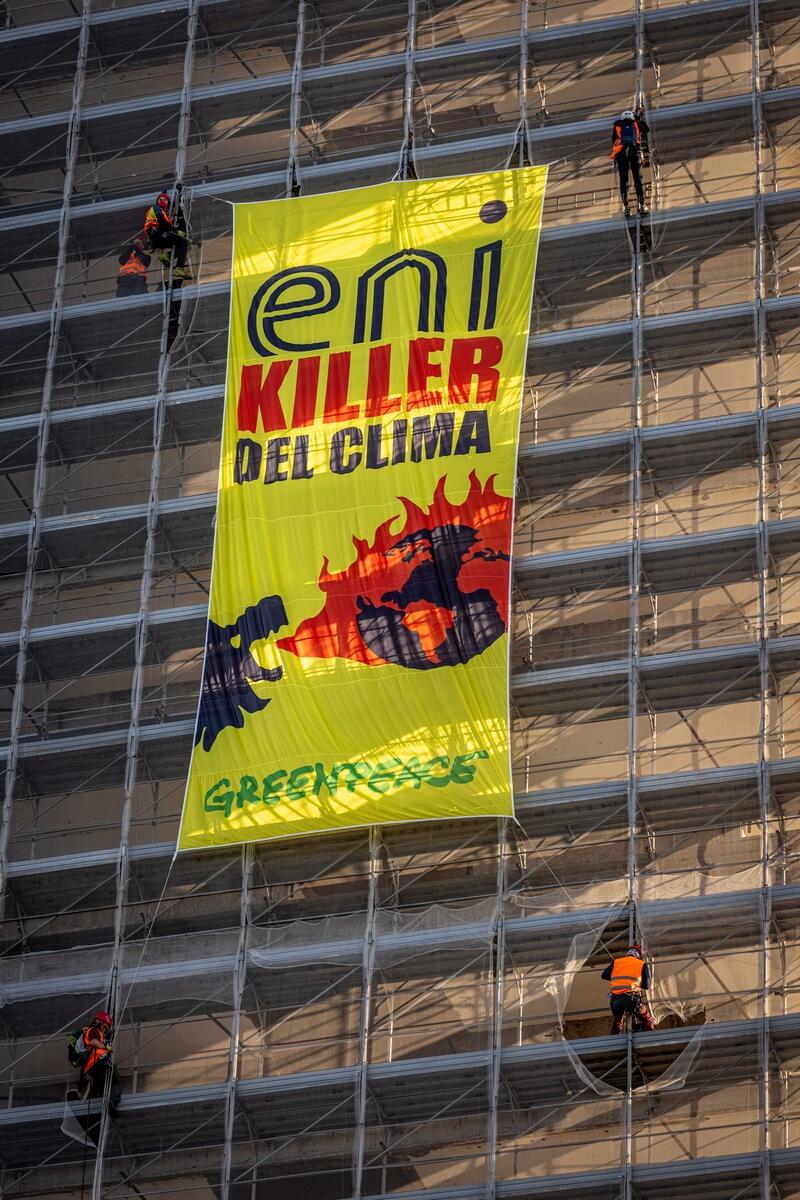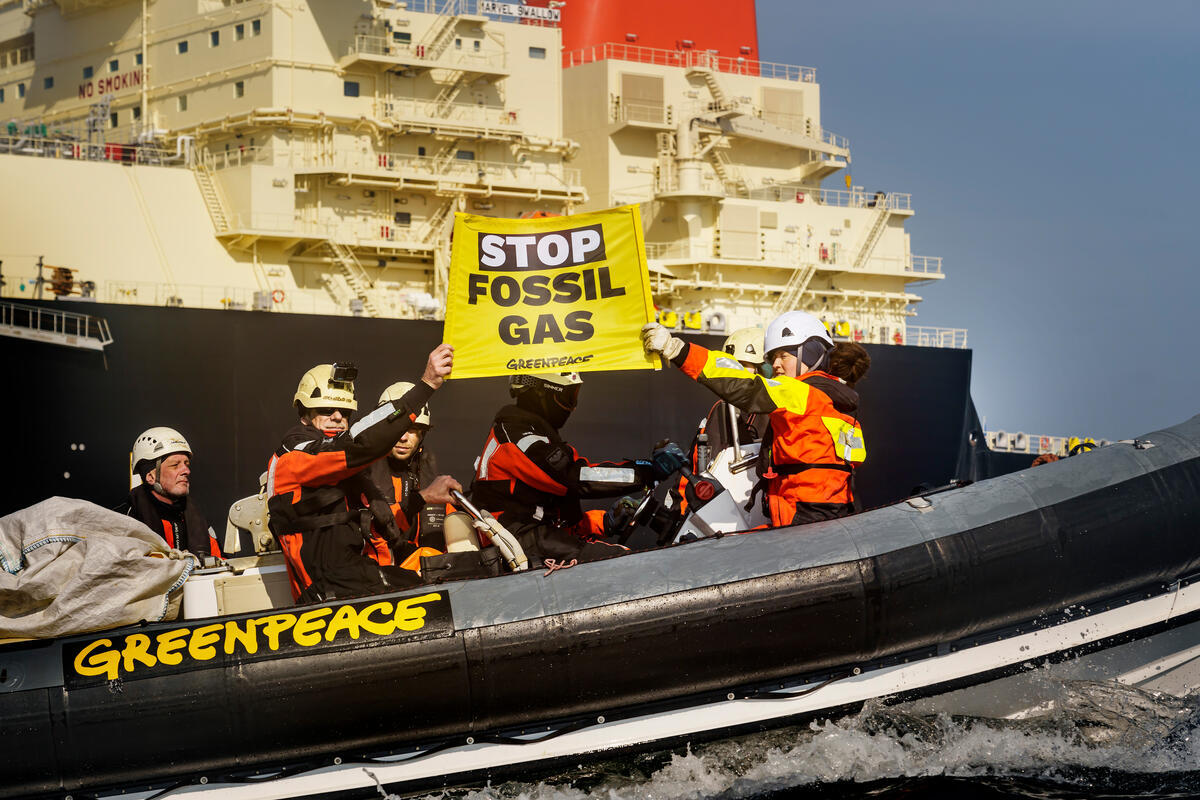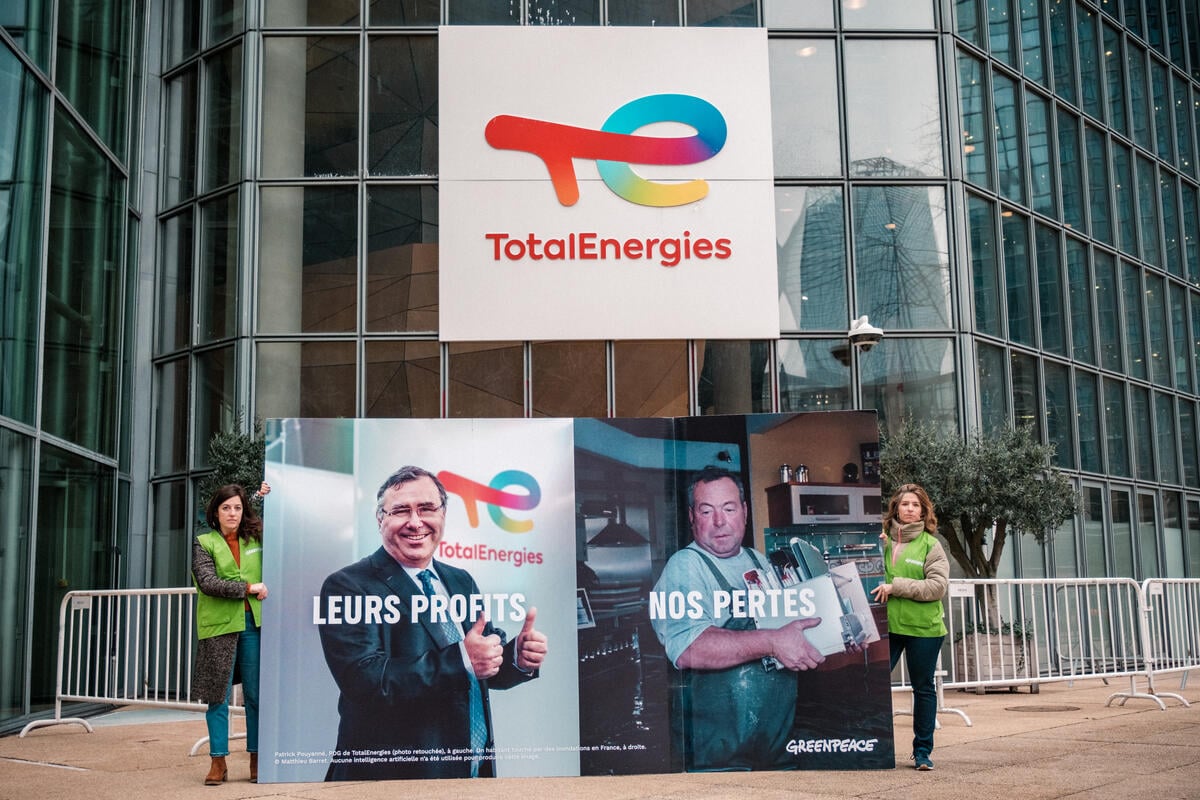The car industry wants you to buy a big car.
Even if you don’t buy a Sports Utility Vehicle (SUV), your options for a ‘small car’ are disappearing as cars get bigger, and this is a huge problem.
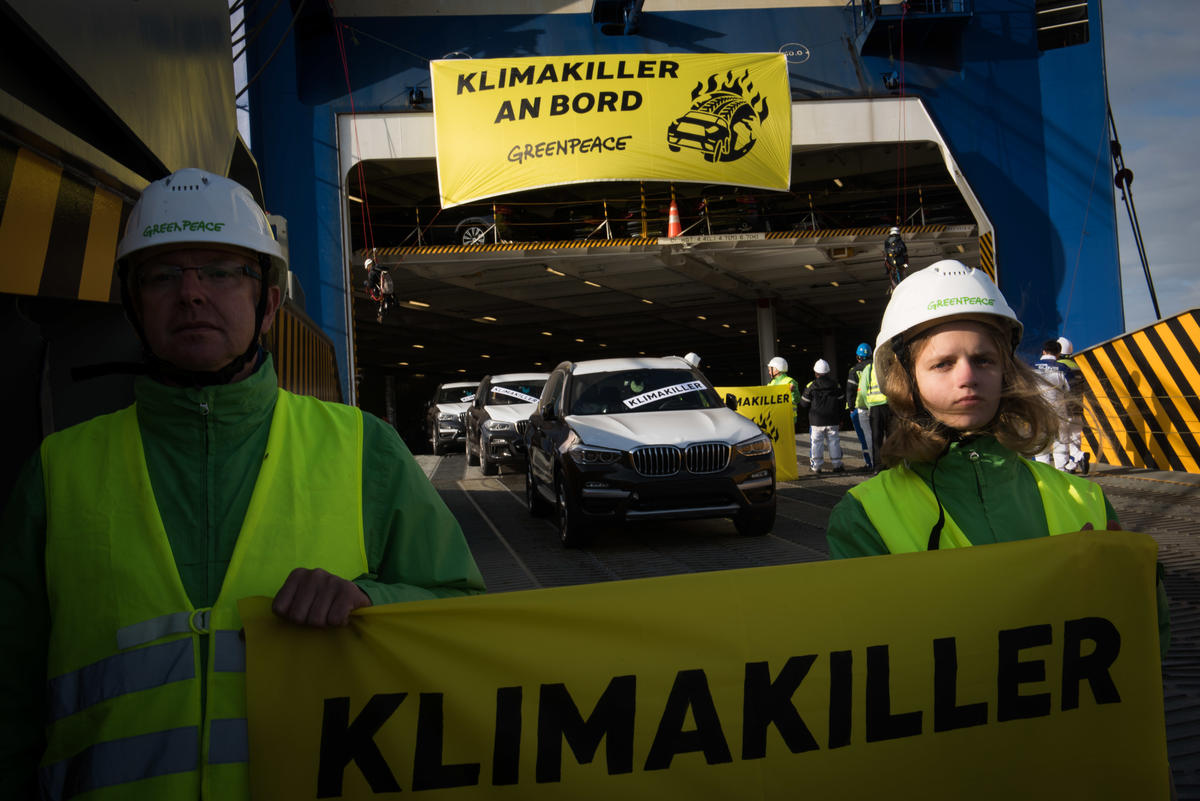
So, on the 7th September, 35 activists from Greenpeace Germany took action. They protested on the loading ramp of a ship importing thousands of SUVs into Europe. Along its side, they unfurled a banner reading ‘climate killers on board’.
They did this because we are in a climate crisis. And we didn’t get here by accident. We got here because reckless companies, including those in the car industry, put profits before a liveable planet. It’s vital that we hold them responsible for what they are doing. We need to dramatically reduce our emissions across all sectors, and that includes our cars. But car companies are taking us backwards. They are making cars bigger, and promoting the heaviest ones. It’s a disaster.
Big bets on big cars
Car companies are investing heavily in SUVs, launching new models all the time. Volkswagen are rolling out 16 new models before 2020. They’re also spending heavily on publicity to make sure we buy them. Unpublished Greenpeace analysis of Nielsen Media data indicates that SUVs are more heavily advertised than any other car types.
And for the car industry, all this investment is paying off; around the world, sales of SUVs are booming. By 2025, 40% of all new cars sold globally could be SUVs.
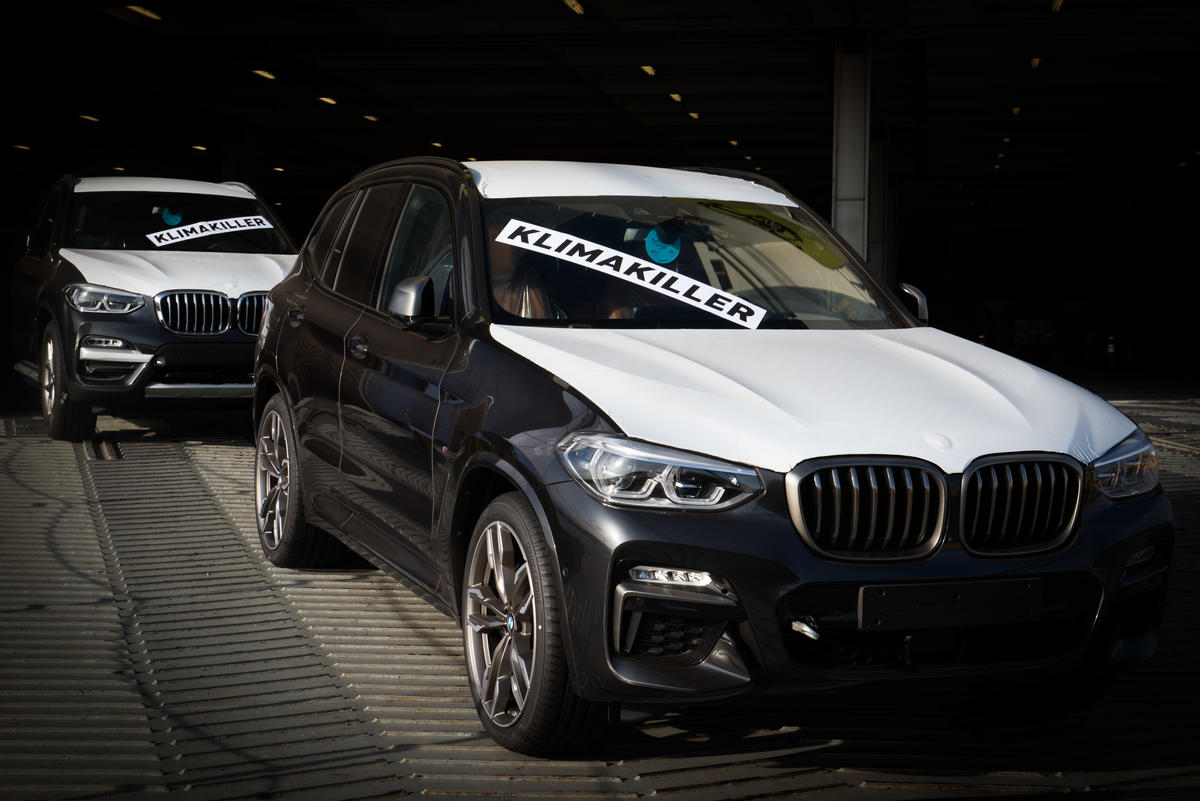
What we are witnessing is a ‘SUVization’ of the model ranges being offered. Even iconic small cars from bygone eras, like the Fiat 500 or the Mini, are now available as SUVs. Large cars are proving increasingly hard to avoid. And that is very bad news.
More weight, more emissions
The average car in Germany was 77kg heavier in 2018 than it was in 2008. This matters, because the heavier a car is, the more energy it needs to move around. For most cars, this means burning more carbon emissions. And don’t be fooled by SUVs powered by electricity; with a much larger battery than its smaller counterpart, emissions jump during production.
A Volkswagen Golf weighs over two thirds more than it did 40 years ago. Some of this weight increase stems from new safety features but as a result, it is estimated to emit 57% more carbon for petrol models. To put that another way, if all Golfs had stayed as light as before, with improvement in technology, their average CO2 emissions would be around half of what they are today.
But by modern standards, a Golf isn’t even that big. A VW Tiguan — essentially an SUV version of the Golf — is 200kg heavier. That’s the same weight as two giant pandas, only nowhere near as cuddly.
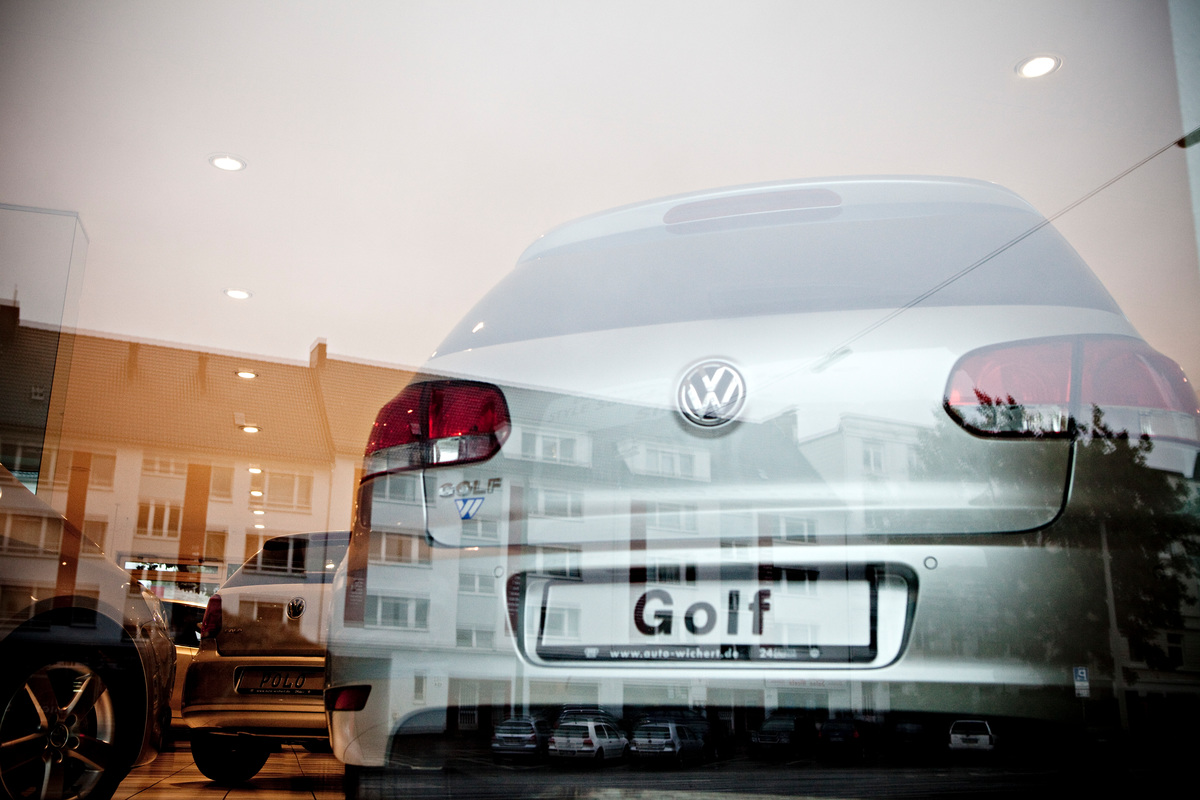
The car industry has become truly grotesque. A Volkwagen from the 80s would look like a toy compared to what’s on the roads today. It would be funny if it wasn’t so serious. But the choices that the car industry made have dire implications for all of us.
It’s not just climate
The problems with SUVs don’t stop with climate. Because of their height and weight, you’re more likely to die if you’re in an accident involving an SUV, if you’re on foot or in another car . This is compounded by the fact that SUV drivers are less likely to obey the rules of the road and more likely to take risks while driving.
The car manufacturers profit-driven supersizing is threatening us all. They have to change direction. The Paris agreement commits nations to preventing more than 1.5 degrees of warming, but none of the large car manufacturers have a plan to honour that. Almost all of them are committed to selling petrol and diesel cars for the foreseeable future and by making cars bigger, they’re just making things worse.
This is reckless. They are profiting at our expense.
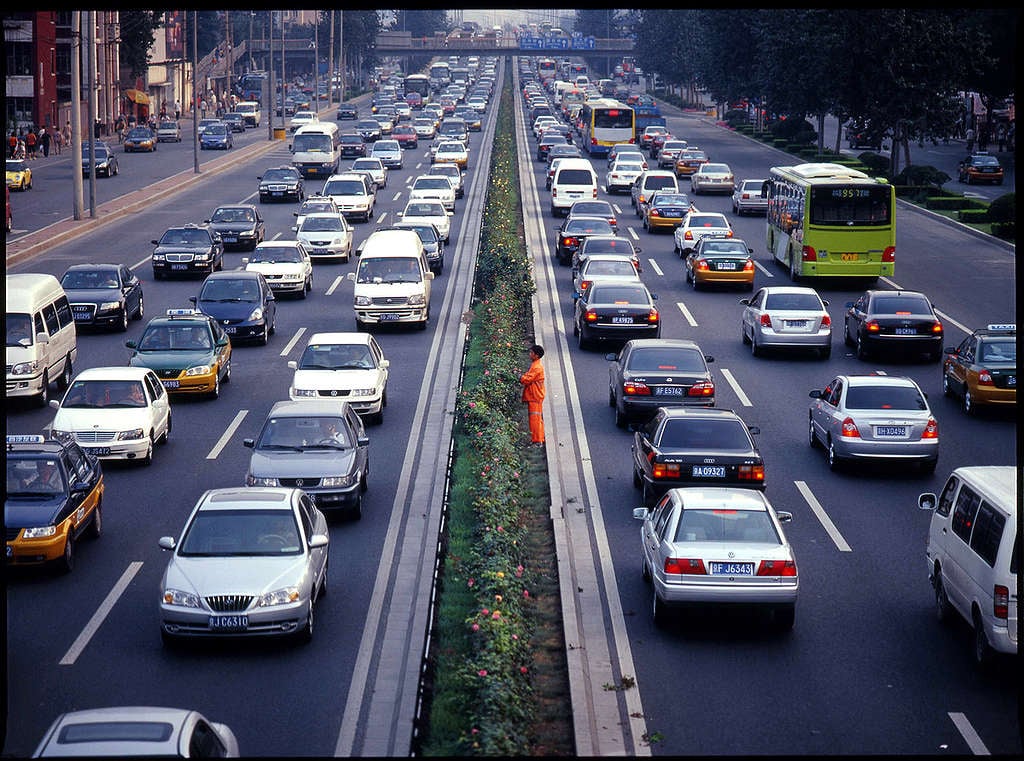
But the path towards sustainability is clear. They need to stop developing models that run on petrol and diesel and make the switch entirely to electric vehicles. And all cars need to be much smaller.
And that’s just the start. We need fewer cars on the road and that means car manufacturers need to stop promoting private ownership of cars. Cars should be shared, not individually owned. Together, we need to work towards a sustainable transport future – of more public transport, more walking and cycling, and fewer cars.
Around the world, thousands of people have signed an open letter calling on those responsible for the climate crisis to clean up their act. Please join them.
Andrew Tobert is a digital campaigner with the Clean Air Now campaign
References
Ediriweera Desapriya u.a. (2010) Do light truck vehicles (LTV) impose greater risk of pedestrian injury than passenger cars? A meta-analysis and systematic review, in: Traffic Injury Prevention, 11/2010, S. 48-56.
Wallner, Peter; Wanka, Anna; Huttler, Hans-Peter (2017) SUV driving ‘masculinizes’ risk behavior in females: a public health challenge, in Wiener klinische Wochenschrift, Jg. 129, Nr. 17, S. 625 – 629.

